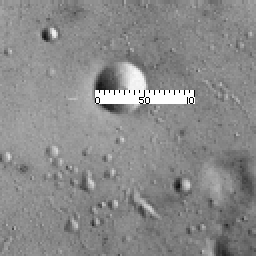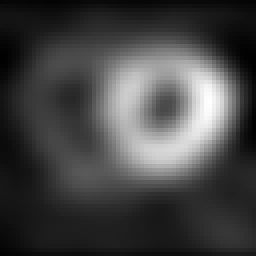 --
--

20 km/pixel-------------------10 km/pixel
The dimension a pixel represents in the real world is called pixel resolution.
Shown below are two images of the moon sampled at two different resolutions. In order to observe resolution effects, a small image of a ruler is superimposed on both moon images. The ruler measures the number of pixels within an image.
 --
--

20 km/pixel-------------------10 km/pixel
There are approximately 27 pixels across the diameter of the lunar crater shown on the first image, and approximately 55 pixels across the crater shown on the second image on the right. The image at the right has higher resolution. This implies that it is possible to measure its features more accurately. Assume the crater has a diameter of 550 km, then the resolution of the image on the left is 20 km/pixel while the image on the right has a resolution of 10 km/pixel.
Shown below is an image of a specimen and a ruler. There is also a synthetic ruler overlaid on the image that measures pixel distances. We can see that 1cm has approx. 192 pixels. We can say that the image was digitized with a resolution of 192 pixels per cm or 488 dpi (dots per inch).

 zoomed by 4:
zoomed by 4:

